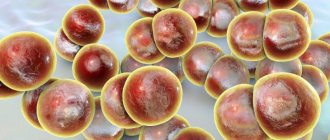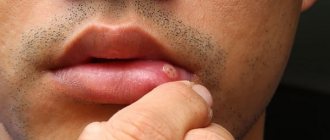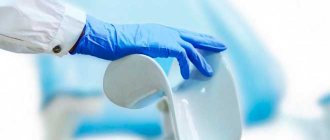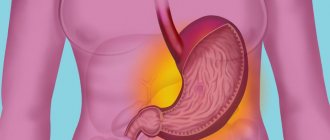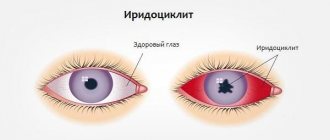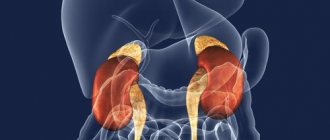Remembering the structure of bone, including the jaws, it must be said that the bone is covered with periosteum (another synonymous name is periosteum). This means that any inflammation of the periosteum, whether serous or purulent, will be called periostitis. If this is inflammation, then it can be acute, chronic, or it can be an exacerbation of a chronic process - a relapse. Summarizing the above, it should be said that periostitis is an inflammation of the periosteum of the alveolar process of the upper jaw and the alveolar process of the lower jaw or the body of the jaw. In this article we will look at the etiology, clinical picture and treatment of acute periostitis.
What is the cause of acute periostitis?
Classification
To facilitate the selection of optimal treatment tactics for periostitis of the jaws, dentists adhere to the following classification of the disease:
According to the method of penetration of pathogenic microorganisms into the periosteum:
- through the roots of the teeth – odontogenic pathway;
- from the bloodstream – hematogenous form;
- along the lymphatic pathways – lymphatic pathway;
- due to damage to the periosteum itself - a traumatic option.
According to the time of appearance of the purulent focus:
- acute periostitis - for example, serous or purulent;
- chronic periostitis - simple or ossifying.
According to the area of distribution of the purulent focus:
- limited periostitis - with damage to the periosteum of one or two teeth;
- diffuse periostitis - covering the entire length of the mandibular region.
If periostitis of the lower jaw can be quickly eliminated, then it is considered uncomplicated. In the case of the addition of sepsis - blood poisoning, an abscess in soft tissues - phlegmon, the disease is recognized as a complicated form of the disease.
Causes of the disease
Most often, periostitis develops as a result of tooth decay. In the resulting cavity, food debris accumulates, on which bacteria actively begin to spread, which subsequently leads to inflammation of the periodontal tissues and periosteum. Main causes of inflammation:
- trauma to the tooth or adjacent tissues,
- caries leading to pulpitis and periodontitis,
- violation of the technology of treatment or tooth extraction: infection in the periosteum area, alveolitis (inflammation of the socket after extraction),
- periodontitis: entry of pathogenic bacteria into the gum pocket, inflammation of the tissues near the tooth root,
- furunculosis, tonsillitis, severe infectious diseases: the infection penetrates the periosteum through lymph or blood.
Causes of the disease
In most cases, periostitis of the jaw is formed against the background of an existing purulent focus in the area of the root of the lower jaw tooth, that is, the pathology is odontogenic . Dentists point to the following provoking factors:
- poor oral hygiene;
- insufficient control over the condition of teeth;
- untimely treatment of diseases of the oral structures – periodontitis, pulpitis;
- long-term course of caries;
- multiplicity of tartar;
- getting pieces of food into periodontal pockets.
The hematogenous and lymphogenous nature of the appearance of periostitis is the result of severe tonsillitis, otitis, tonsillitis or scarlet fever. Similar reasons are typical for children whose own immune barriers are weakened.
Traumatic periostitis is more often diagnosed in adults; it occurs after the removal of a complex tooth structure or other surgical intervention, for example, due to a fracture of the skull bones, foci of infection of the soft tissues of the lower jaw.
Less often it is possible to trace the relationship between periostitis of the lower jaw and local/general hypothermia, severe psycho-emotional shock, and physical overexertion. It is extremely rare to establish the course of a specific process - tuberculosis, syphilis . Modern methods of laboratory and instrumental examinations come to the aid of dentists.
Definition of disease
Periosteum is called vascular tissue, which consists of a whole set of cells and nerve fibers that together form young bone.
It is the periosteum that serves as the main connector between muscles and ligaments.
Due to such close proximity and a large number of vessels, the infection can spread through the periosteal elements without hindrance and provoke an inflammatory process. The name of this pathology is periostitis or inflammation of the periosteum of the tooth.
Periostitis can develop at any age, but it is rarely diagnosed in older people and children.
Most of all, periostitis “loves” the teeth of the lower jaw, and poses a more serious danger to the teeth of the upper jaw - in this case, not only the mucous membranes of the gums and bone tissue, but also the sinuses can suffer. The inflammatory process usually starts after injury to the gums. Within a few hours, severe swelling appears, the gums become enlarged, and the patient complains of pain and discomfort while eating. Over time, periostitis begins to spread to adjacent soft tissues, the lips, chin, and jaw swell. On palpation, severe pain is felt; in some people, the contours of the face become asymmetrical. If nothing is done, a gum abscess may develop at this stage. Visually, the area affected by the pathological process becomes swollen, covered with a whitish coating, and the tooth becomes mobile.
In some cases, inflammation is accompanied by suppuration, serous fluid comes out of the capsule.
In the absence of adequate treatment, relapses are possible.
General symptoms and signs
Periostitis can be recognized at an early stage by the unusual roll-like swelling of the lower jaw tissues that surround the tooth. This symptom is also called flux. The area affected by inflammation gradually increases in size, and pain appears when touched or eaten. Later, the pathological focus spreads more and more widely, covering not only the lower jaw, but also the temple area.
The main symptoms of periostitis of the jaws:
- mucous tissue turns red;
- soft tissues swell in the area of one or more teeth;
- temperature rises to 37.5–38.5 degrees;
- discomfort gradually intensifies, pain is pulsating in nature;
- touching the source of pus makes the patient scream;
- increasing asymmetry of facial features - one-sided swelling of tissues, distortion;
- enlargement of the nearest groups of lymph nodes – regional lymphadenitis.
The severity of clinical signs of periostitis directly depends on the provoking factor of the disease, the rate of formation of the pathological focus, as well as the age of the patient and the height of his immunity. For example, with a chronic course and a local version of inflammation of the periosteum, a person may not notice pronounced sensations in the lower jaw area at all. Whereas bilateral periostitis of the jaws requires immediate medical attention and comprehensive treatment.
Varieties
Experts distinguish several types of periostitis:
- simple - slight swelling, pain on palpation, changes on the radiograph are not visible;
- fibrous - does not cause an increase in temperature and severe pain; upon palpation, a dense swelling is felt due to the growth of fibrous tissue over the periosteum;
- purulent - the appearance of a sharp pain syndrome, elevated temperature, large lumpiness with severe swelling occurs; general intoxication is observed;
- serous albuminous - not pus is found inside the flux, but a serous-mucous viscous liquid, small fibrous bodies, fat droplets and pigments are concentrated in it;
- ossifying - characterized by the formation of new bone tissue at the site of the pathological focus; after the pus has matured, the cavity may rupture, and bone continues to be produced at the site of the ruptures.
In addition, periostitis is distinguished by the nature of its course:
- Acute – causes severe symptoms that intensify over several days. Severe pain forces you to take painkillers. Purulent inflammation appears.
- Chronic – less common. In most cases it develops on the lower jaw. Chronic periostitis leads to the appearance of small but dense swelling, without purulent contents. There is no facial asymmetry. This form can last from a couple of months to several years. Sometimes there are exacerbations when the pain returns, but after taking painkillers the symptoms may subside.
Symptoms of acute odontogenic periostitis
A purulent focus in the periodontal tissues directly in the area of the alveolar process is acute periostitis of the jaw. The cause is most often one of the complications of dental diseases - for example, difficult eruption of molars, injuries to the lower jaw. In the case of the attachment of pathogenic microorganisms - staphylococci or streptococci, a cavity with pus is formed in the periosteum.
Characteristic signs of acute odontogenic periostitis:
- intense pain impulses - pulsating, aching, exhausting;
- temperature jump to 38.5–39 degrees;
- severe swelling of the face on the affected side;
- enlarged and painful lymph nodes.
Early diagnosis of acute odontogenic periostitis is complicated by the absence of a darkened area on the radiograph. The doctor focuses on the patient’s complaints and visible changes in the oral cavity - redness of the mucous membrane, swelling, soreness.
In the case of rapid application of modern treatment methods - antibiotic therapy, physiotherapy, pathology of the lower jaw can be dealt with in a short time. The prognosis is favorable. If the patient contacts the dentist late, periostitis is complicated by osteomyelitis - purulent bone lesions, and phlegmon - cavities with pus in the soft tissues.
Clinical picture of acute periostitis
The clinical picture, or rather its severity, depends on the following factors:
- state of local and general immunity;
- presence of concomitant diseases;
- microflora, its virulence (the ability of a microorganism to infect);
- age of the patient (periostitis occurs more often in old age);
- type of inflammatory reaction;
- localization of the source of inflammation in the patient’s periodontium.
It was also noted that in patients with developed periostitis of the jaw, before this there was hypothermia/overheating, stress, tension, prolonged intense exercise.
As I already wrote, periostitis can occur in both the upper and lower jaws. In the upper jaw, the most common cause of acute periostitis is a focus of inflammation, which is localized near the first molars (1.6 and 2.6 teeth); in the lower jaw, the most common causative teeth are (by reducing the incidence of acute periostitis from “causal teeth”):
- 6 and 4.6 teeth;
- 8 and 4.8 teeth;
- 7 and 4.7 teeth.
In approximately 30% of cases, the cause of acute periostitis of the mandible is the first permanent molars of the mandible.
Complaints in acute serous periostitis:
Acute serous periostitis is observed in the first 2-3 days of the disease. Patients note:
- Intense pain that is felt constantly;
- Swelling of the cheeks, lips;
Clinically:
- A damaged tooth (either not treated or a filling of poor quality);
- Dental pocket;
- Smoothness of the transition fold;
- Pain when percussing the “causal tooth”
- When cutting the mucosa and periosteum, we can say that the periosteum is infiltrated and hyperemic.
- If left untreated, serous periostitis turns into purulent periostitis.
Complaints with purulent periostitis, which is limited (that is, the processes of the jaws are affected)
- Intense pain;
- Swelling of soft tissues;
- Violation of general condition (weakness, fatigue, increased body temperature (most often it is 37.5 - 38 degrees Celsius);
- Pain when touching the tooth with the tongue;
- Pain when percussing the “causal tooth”;
Complaints with purulent diffuse periostitis (that is, the body of the jaw is affected):
- Intense pain;
- Swelling of soft tissues;
- Violation of general condition (weakness, fatigue, malaise, chills, high body temperature (39 - 39.5 degrees Celsius));
- Pain when touching the tooth with the tongue;
- Pain when percussing the “causal tooth”;
- Irradiation of pain along the branches of the trigeminal nerve (that is, pain can be felt in the ear, temple and back of the head)
- Dense, painful lymph nodes.
The doctor will notice a hyperemic, smoothed transitional fold, destroyed/half-destroyed teeth, and periodontal pockets.
Causal teeth play an important role in the clinic of acute periostitis. So, depending on their location, the clinic of edema is different. So, for example, with periostitis from teeth 1.3 and 2.3, swelling spreads to the infraorbital region; if the cause of acute periostitis is an odonotogenic infection from the incisors, then the upper lip and wings of the nose will be more swollen;
When the purulent process moves to the periosteum from the large molars of the upper jaw, swelling can affect not only the buccal and zygomatic areas, but also the parotid area.
We will also look at the spread of swelling from the teeth in the lower jaw:
- From the incisors and canines on the lower jaw, swelling spreads to the chin area and lower lip;
- From large molars - to the cheek, chin and parotid areas.
The amount of edema, of course, depends on the type of structure of the vascular (venous) system; if it is finely looped, then the edema will be insignificant.
With a large venous system, in the area of the tubercle and body of the jaw, the swelling will be greater. It should be emphasized that in acute periostitis, the purulent focus can be localized on both the vestibular and oral surfaces.
If purulent periostitis is localized on the lingual side, patients experience pain when eating, talking, or opening the mouth. Clinically noted:
- Swollen tongue covered with plaque;
- The tongue is often raised and turned in the healthy direction;
- It is painful for the patient to move it;
- The hyoid ridge is enlarged and protrudes above the tongue and alveolar process;
- If the lesion has spread from the lower wisdom teeth to the pterygomaxillary fold or the anterior palatine arches, pain when swallowing;
Differential diagnosis of acute periostitis
Differential diagnosis of acute periostitis should be carried out with:
- Exacerbated chronic periodontitis;
- Inflammation of the sublingual and submandibular glands;
- Acute odontogenic osteomyelitis;
- Acute non-odontogenic lymphadenitis.
- The difference between acute periostitis and aggravated chronic periodontitis is that in acute periostitis, the source of inflammation most often affects a group of teeth, and aggravated periodontitis occurs in only one tooth; with aggravated periodontitis there are no symptoms that characterize acute periostitis:
- Facial asymmetry;
- Swelling of soft tissues;
- Pain on palpation;
Reaction of lymph nodes, etc.
- When acute periostitis differs from inflammation of the salivary glands, the dentist must remember that in acute periostitis the salivary glands are NEVER involved in the pathological process. If either cloudy or purulent exudate is released from the mouths of the salivary glands, this indicates a pathological process in the salivary glands themselves.
- You can differentiate between acute periostitis and acute osteomyelitis by Vincent’s symptom, which is characteristic only of acute osteomyelitis (pain in the lower lip or chin, or a combination of these signs);
- In acute nonodontogenic lymphadenitis, there are no reactions from the dental system. That is, there will be no clinical signs in the oral cavity.
Symptoms of chronic periostitis
The chronic form of periostitis of the jaws is common in people with primary or secondary immunodeficiency. People turn to the dentist at the moment of exacerbation, when they notice the following manifestations of the inflammatory process:
- intractable discomfort in the oral cavity;
- local or widespread roller-like compaction on the gum;
- temperature fluctuations from subfebrile numbers – 37.0–37.5 to values of 39.5 and above;
- opening of the pus cavity and release of the contents;
- change in skin color over the inflamed area - redness;
- deterioration of appetite - its decrease up to complete absence;
- involvement of the submandibular lymph nodes in the process – increase in size, pain.
During the period of remission, chronic periostitis of the jaw makes itself felt by a slight change in the oval of the face on the affected side, the presence of a compacted cushion in the area of the diseased tooth, and discomfort when pressing on the lower jaw, for example, when eating solid food.
Dentists point out that a characteristic sign of the chronic course of periostitis is the alternation of periods of deterioration in a person’s well-being: periods of exacerbation are followed by a lull, when the disease may not manifest itself at all. However, therapeutic measures should be carried out in any case to avoid serious complications.
What is periostitis of the jaw
This disease is an acute or chronic inflammatory process that has developed in the periosteum of the alveolar process. In the vast majority of cases, it is the acute form of periostitis that develops.
Inflammation of the periosteum can have both odontogenic and non-odontogenic origin. In the first case, periostitis is a complication of diseases of the tooth and surrounding tissues. In the second case, this disease is caused by other reasons. These include:
- fracture of the lower or upper jaw;
- penetration of infection into the wound on the face;
- poorly performed dental surgery - removal (extraction) of a tooth or installation of implants, which caused tissue injury or infection;
- the presence of infection in the blood or lymph due to an infectious disease.
If a tooth is extracted poorly, some part of it may remain in the gum, which causes inflammation that spreads to the periosteum.
The root of the tooth broke off. The fragment remained in the alveolar bone.
Periostitis of the jaw can begin even in the absence of medical errors during surgery. This occurs when there is already a focus of infection in the periodontium. Surgery in this case leads to the spread of infection to the periosteum. Such periostitis should be considered odontogenic, although it is provoked by external factors.
Inflammation of the periosteum affects only one side of the jaw. In this case, the inflammatory process usually develops on the surface of the jaw bone facing the cheek. Inflammation of the periosteum can be localized to any of the jaws, however, periostitis of the lower jaw is more common than periostitis of the upper jaw .
Odontogenic periostitis, which occurs in an acute form, occurs as a complication of diseases such as:
- chronic periodontal inflammation;
- inflammation of the walls of the hole remaining in the place of the pulled out tooth (alveolitis);
- complicated growth of wisdom teeth;
- suppuration of a cyst that has developed due to diseases of the tooth or surrounding tissues;
- periodontal inflammation.
The most common cause of periostitis is chronic periodontitis.
Acute periostitis, which developed as a complication of dental diseases, can occur in both serous and purulent forms.
What is serous periostitis of the jaw
This disease is an inflammatory process in the periosteum, resulting from its infection with bacteria, usually staphylococci, accompanying acute or chronic periodontitis. As a rule, this form of inflammation of the periosteum is a local disease localized near the diseased tooth. Serous periostitis is also characterized by mild signs of general intoxication, such as deterioration in health and a slight increase in temperature. The local clinical picture includes such phenomena as:
- formation of infiltrate in the area of inflammation;
- accumulation of exudate in the periosteum;
- overflow of blood vessels with blood in the area of the inflammatory process;
- swelling of the periosteum.
Serous inflammation of the periosteum is often provoked by factors such as:
- overheat;
- hypothermia;
- excessive physical activity;
- nervous stress.
Serous periostitis can be recognized by the following signs:
- the appearance of edema in the area of the inflammatory process, which, with sufficient intensity of inflammation, disrupts the symmetry of the face;
- redness and swelling of the oral mucosa in the area of the diseased tooth;
- pain when pressing on the causative tooth and when tapping on it;
- smoothness of the transitional fold of the gums.
Serous inflammation of the periosteum is characterized by a slight enlargement of the lymph nodes located near the area of inflammation, which at the same time retain elasticity, remain painless, and do not adhere to adjacent tissues.
Periostitis of the lower jaw (photo)
If serous periostitis develops as a complication of a disease of a tooth that has several roots, then this tooth is usually removed. After this, the periosteum is opened to remove the exudate. If the causative tooth has only one root, then they often do without extraction, carrying out conservative treatment. However, dissection of the periosteum is mandatory in this case as well.
Lack of timely treatment for serous periostitis leads to the transition of the disease to a purulent form, which can lead to severe complications and even death.
What is purulent periostitis of the jaw?
The purulent form of inflammation of the periosteum, colloquially called gumboil, is a serious and dangerous disease that develops as a result of the progression of serous periostitis. Purulent periostitis can develop not only as an independent disease, but also be an expression of osteomyelitis of the jaw. With purulent inflammation of the periosteum, serous exudate turns into purulent. In children, the transition from the serous form of periostitis to the purulent form occurs faster than in adults due to the structural features of the body.
Periostitis of the upper jaw (photo)
With purulent periostitis, purulent exudate spreads through the bone tissue. As a result, the cortical layer is destroyed and the periosteum is detached, which melts and dies. At the periphery of the inflammation zone, young layered bone tissue is actively growing.
When diagnosing periostitis, it is important to differentiate it from other diseases with similar symptoms, in particular, from osteomyelitis. Thus, purulent inflammation of the periosteum develops only on one surface of the jaw, while osteomyelitis affects the bone on both sides.
The symptomatic picture of purulent periostitis includes both general and local manifestations. Local symptoms include tissue swelling, leading to facial asymmetry. The patient's cheek area adjacent to the area of inflammation and lip swell.
Acute purulent periostitis of the jaw (photo)
A characteristic sign of the purulent form of periostitis is redness of the skin over the area of inflammation. In addition, the patient develops regional lymphadenitis - an inflammatory process in the lymph nodes, leading to their enlargement and pain.
The symptoms of acute purulent periostitis include severe, often throbbing pain radiating to the ear and temple. The patient sometimes thinks that the whole half of his head hurts; it becomes painful for him to open his mouth, move his tongue and swallow.
If in the serous form of periostitis the transitional fold is smoothed out, then in the purulent form a ridge is formed, which is a sign of the development of a subperiosteal abscess. When the periosteum melts and pus penetrates under the mucous membrane, a submucosal abscess develops. When purulent exudate spreads towards the hard palate, a palatal abscess begins.
Abscesses may resolve by forming fistulas through which pus leaks into the mouth or onto the surface of the skin.
After removing the purulent exudate through the fistula, the child or adult feels better for some time, but this does not mean recovery at all.
General symptoms of acute purulent periostitis include fever above thirty-eight degrees, headache, general weakness and other signs of intoxication.
Acute odontogenic periostitis (photo)
Purulent periostitis can cause serious complications, such as osteomyelitis - a purulent-necrotic infection of bone tissue, infection of the brain with subsequent development of meningitis, infection of remote internal organs, and general sepsis.
Chronic periostitis of the jaw
Typically, a chronic form of inflammation of the periosteum develops after acute periostitis. In children, however, there are cases of this disease developing as a primary pathology. The likelihood of developing chronic periostitis increases in the presence of a long-lasting focus of infection, which can be:
- bad tooth;
- chronic inflammatory process in the maxillary cavity;
- regular exacerbations of chronic periodontal inflammation without severe symptoms.
The cause of the development of chronic periostitis can also be trauma to the jaw tissue caused by various orthodontic structures. Often this disease occurs as a result of a weakened immune system.
The following types of chronic inflammation of the periosteum are distinguished:
- Simple chronic periostitis.
- Ossifying chronic periostitis.
- Resolving chronic periostitis.
A chronic inflammatory process in the periosteum leads to its hypertrophy - the connective tissue first grows and then ossifies - ossifies. In simple chronic periostitis, after treatment, the newly formed osteoid tissue reverses. In the case of the ossifying form of the disease, ossification begins at an early stage of the development of periostitis and usually leads to hyperostosis - a pathological increase in the amount of bone matter. With recurrent periostitis, the most common cause of which is trauma causing a hematoma, the periosteum thickens, the structure of the bone tissue changes, and the bone is replaced with fibrous tissue.
Chronic periostitis of the jaw in a child (photo)
Chronic periostitis can last up to several years, leading to some changes in facial shape due to bone thickening. There is no pain when palpating the thickened area. A sign of this disease is also swelling and redness of the oral mucosa in the area of the inflamed area of the jaw.
Chronic periostitis is difficult to diagnose. When making a diagnosis, they rely on the medical history and the results of an x-ray of the jaw. In this case, the disease should be differentiated from chronic osteomyelitis of the jaw, as well as from damage to the jaw bone by actinomycosis or syphilis. In addition, some oncological diseases may have a clinical picture similar to periostitis.
Differential diagnosis
To establish the true diagnosis of periostitis of the jaws, dental x-rays, and, according to individual needs, CT and MRI, can be used. However, not all medical institutions have the necessary modern equipment.
Experts make a diagnosis of periostitis based on:
- characteristic complaints of the patient - acute local pain in the oral cavity, discharge of pus;
- examination - redness of the tissues, swelling of limited extent, pain when pressed;
- information from additional examination methods - laboratory, instrumental, for example, radiography of the facial skeleton.
Anamnesis is of great importance - previous oral infections, long-term respiratory diseases, dental injuries.
In the chronic version of periostitis of the lower jaw, other methods can be used - tissue sampling from the lesion, computed tomography of both the upper and lower parts of the skull skeleton to exclude malignant space-occupying neoplasms.
Diagnostics
When a patient presents with these symptoms, the doctor first conducts a thorough examination. Sometimes only one examination is enough to detect periostitis. To make an accurate diagnosis and form, it is necessary to undergo several types of studies:
- lab tests. They are needed to detect immunoglobulin levels and check for the presence of rheumatoid factor;
- if there is a suspicion of syphilis, then PCR tests are carried out;
- radiography to detect periosteal abnormalities;
- nuclear magnetic resonance imaging to identify side formations and edema in bone tissue;
- in rare cases, the patient is sent for a duplex ultrasound scan.
Conservative treatment tactics
As a rule, periostitis of the lower jaw in the acute stage of its course should be treated by a dentist. If the patient seeks medical help in a timely manner, conservative tactics are allowed - the use of various pharmaceutical drugs to suppress the inflammatory process in tissues and eliminate pain. There are three main subgroups of medications.
Antibacterial agents
Most often they resort to drugs from the subgroup of combined synthetic penicillins, for example, they use Amoxiclav, Flemoklav, or, if they are intolerant, to the subgroup of cephalosporins - for example, Suprax.
Anti-inflammatory drugs
Representatives of NSAIDs have the ability not only to reduce the intensity of the inflammatory process in the affected tissues, but also to reduce the severity of pain; for example, Nimesil, Airtal have this effect.
Analgesics
Since the acute moment of periostitis gives the patient a lot of unpleasant sensations, dentists recommend drugs with powerful analgesic activity, including non-narcotic drugs.
In severe periostitis of the lower jaw - with severe inflammation, toxic substances enter the bloodstream, which have a detrimental effect on a person’s well-being . In this case, detoxification measures are required - intravenous administration of fluids, followed by their elimination by the kidneys with the help of diuretic drugs. In order to raise immune barriers, pharmaceutical vitamin complexes are prescribed.
Complications and prevention of the disease
If you do not seek help from a doctor in time, a chronic form of the disease may occur. This process entails side effects:
- osteomyelitis;
- phlegmon;
- abscess;
- sepsis, etc.
To prevent the occurrence of such a dangerous disease, you need to follow a few simple preventive rules:
- wear only orthopedic shoes or use special insoles;
- do not overload the body by carrying and lifting heavy objects;
- control weight, eat a balanced diet;
- timely treatment of infectious diseases;
- strengthen the muscle corset through physical exercise.
Surgical treatment tactics
In case of severe purulent course of the disease, treatment of periostitis of the jaw involves surgical intervention - opening the cavity with pus and subsequent rinsing with an antiseptic solution.
Procedure steps:
- providing access to the purulent cavity of periostitis - dissection of the mucous membrane;
- penetration through the periosteum into the abscess cavity;
- removal of pathological contents - pus with dead tissue;
- washing with an antiseptic and then an antibacterial solution;
- according to individual needs, a tube is left for subsequent drainage of the cavity - the flow of pus out.
The extent of surgical intervention is determined by the severity of periostitis, the area of the lesion, and the age of the patient. The specialist also decides on the need for anesthesia - local or general.
At the postoperative stage, dentists must prescribe oral/parenteral administration of antibacterial medications in order to finally suppress the inflammatory process. Additionally, decoctions of medicinal herbs and plants – chamomile, calendula, sage – can be used. They have antiseptic and mild anti-inflammatory properties.
Treatment
Treatment of periostitis of the tibia at the initial stage may include only the maximum reduction of loads on the affected area for a period of 2 to 3 weeks. For more effective treatment for complex forms of the disease, additional methods of therapy are prescribed. Below we will consider how to treat periostitis of the tibia.
Types of therapy:
- drug treatment;
- physiotherapy;
- surgical intervention.
How to treat hip bursitis?
Drug treatment
First of all, the specialist prescribes medications that will help relieve pain, swelling and inflammation in the affected area. In complex forms of the disease, antibiotic treatment must be included. It is important to remember that only a specialist can choose the correct and effective treatment, based on the individual characteristics of the patient.
Drugs for the treatment of periostitis:
- antibacterial: “Biseptol”, “Sulfadimezin”, “Sulfadimethoxine”;
- anti-inflammatory: Lornoxicam and others;
- medications that contain calcium: 10% calcium chloride solution, calcium gluconate, calcium lactate;
- vitamins of group C;
- allergy medications: “Diazolin”, “Suprastin”;
- antibiotics: “Tsiprolet”, “Amoxiclav”, “Lincomycin”;
- warming dressings based on Vaseline;
- painkillers in the form of ointments and solutions: Miramistin, Dioxidin, Ketoprofen.
Physiotherapy
Physiotherapy for this disease also has an effective effect: relieves pain, inflammation, improves blood circulation, etc.
The following procedures are most often prescribed:
- massage the damaged area;
- dry heat;
- paraffin therapy;
- UHF;
- Minin's lamp;
- physiotherapy.
Surgery
This method of therapy is indicated for purulent, tuberculous and syphilitic forms of periostitis. The surgical intervention is carried out as follows: the surgeon makes an incision at the site of the lesion, and the area around the source of the disease is disinfected. Next, the specialist inserts a drain into the incision, through which the pus comes out. A simple operation that takes place without any side effects. After surgery, you should absolutely not carry heavy objects or engage in complex physical exercises.
Find out what to do if your knee gets cold.
Activities during the rehabilitation period
Physiotherapeutic procedures help speed up recovery and eliminate discomfort after surgery, as well as prevent possible secondary complications - periostitis of the upper jaw, infection of the primary lesion.
Main types of physiotherapy:
- fluctuarization – 1 time per day, 10 procedures;
- use of ultraviolet rays – 5 times;
- ultrasound treatment - for weakened patients who have a tendency to increase their temperature;
- paraffin therapy - prescribed to soften scar tissue and accelerate healing.
Throughout the postoperative stage, it is recommended to follow a diet - dishes should have a semi-liquid, uniform consistency, without large solid pieces. Otherwise, sharp edges can injure the wound surface and provoke increased inflammation at the site.
Careful adherence to oral hygiene is also mandatory: the use of rinses after each meal, the use of toothpastes with a mild but pronounced antiseptic effect and reducing the amount of pathogenic microflora - decoctions of medicinal herbs (sage, chamomile, string, calendula).
In order to accelerate the healing of the periosteum and mucous membrane, the patient is recommended to follow all the instructions of the attending physician. Independent use of pharmaceutical products is unacceptable.
Treatment of periostitis
In the early stages, before the appearance of an abscess, conservative treatment of periostitis is possible. Drug therapy consists of taking antibiotics, painkillers and anti-inflammatory drugs prescribed by the doctor. Most often, doctors prescribe quite strong drugs: Tsifran, Doxycycline, Amoxicillin, etc.
Surgery is resorted to when the patient presents with acute symptoms; in this case, therapeutic treatment is simply impossible. What does a doctor do? After anesthesia, an incision is made on the gum in the projection of the source of inflammation, ensuring the outflow of purulent exudate. Then the specialist treats with antiseptic solutions, washes the wound surface, and installs drainage to avoid re-accumulation of pus. After removing the drainage, the bone tissue is restored, and sutures are applied if necessary. After the surgical surface has healed, it is important to undergo endodontic treatment and restore the damaged crown to prevent re-infection. All this takes more than one day - as a rule, you will have to visit the doctor at least 3-4 times, and the treatment will last for 1-2 weeks. After surgery, it is also important to take painkillers, antipyretic drugs, restorative drugs and vitamin complexes.
Additionally, the doctor may prescribe physical therapy: exposure to weak current, UHF (electromagnetic field treatment), electrophoresis (the use of medications and improving their absorption by tissues with the help of current), laser irradiation or ultrasound exposure.
If the tooth is severely damaged, it is necessary to resort to its removal.
On a note! Self-medication or treatment of periostitis at home is strictly prohibited - this is fraught with serious health consequences. You should not take antibiotics uncontrollably, try to open an abscess, or use rinses and compresses. Even if it is possible to temporarily relieve inflammation, it will return again, and self-treatment is fraught with further spread of the infection.
Prevention
The well- known truth - any disease is easier to prevent than to treat - is also relevant for periostitis . As preventive measures for the appearance of purulent cavities under the periosteum, the following rules should be followed:
- regularly and carefully monitor oral hygiene;
- use a toothbrush at least twice a day;
- use rinses with complex properties after every meal, even a light snack;
- visit the dentist for a preventive examination at least once every six months;
- promptly get rid of foci of infection - caries, tartar, stomatitis, pharyngitis;
- avoid trauma to the oral cavity.
Periostitis can be defeated if it is diagnosed in a timely manner and treatment is carried out in full. Therefore, if you feel the slightest deterioration in your health - the appearance of swelling, redness, soreness of the gums - it is better not to delay visiting the dentist. Only a doctor will select the optimal treatment regimen for the disease. In this case, it will be possible to avoid severe complications and subsequent relapses of the disease.
Diagnostic methods
To make a correct diagnosis, the doctor examines the patient’s oral cavity and prescribes additional tests (if necessary). Basic diagnostic methods:
- Visual examination to obtain general information about the oral cavity and the condition of the periosteum.
- X-ray allows you to determine the boundaries of the inflammation.
- A general blood test is a must if you have purulent inflammation.
- Differential diagnosis is carried out for a number of diseases with similar symptoms. For example, acute periodontitis is characterized by an inflammatory process at the root apex. Abscesses, phlegmons and lymphadenitis are accompanied by the formation of compactions, the skin over which becomes hyperemic. Inflammation of the salivary glands is characterized by the release of purulent secretion from the salivary ducts, but the gums and teeth remain intact. In acute osteomyelitis, the body temperature rises sharply, the patient feels chills, and complains of migraines.
Diagnosis must be comprehensive and as accurate as possible - after all, there are other dental pathologies that have symptoms similar to periostitis. And incorrectly prescribed treatment will only trigger the situation, and the pathology will move into the chronic stage.
Fibrous periostitis
Fibrous periostitis develops gradually and is chronic. It occurs under the influence of irritations lasting for years and is manifested by a callous fibrous thickening of the periosteum, tightly fused to the bone. It is observed, for example, on the tibia in cases of chronic leg ulcers, bone necrosis, chronic inflammation of the joints, etc. Significant development of fibrous tissue can lead to superficial destruction of the bone. In some cases, with a long duration of the process, new bone formation is observed. After eliminating the stimulus, a reverse development of the process is usually observed.
Diagnosis of periostitis
When making a diagnosis, doctors pay attention to symptoms. Methods such as:
- visual inspection;
- radiography;
- laboratory blood test.
A visual examination may reveal a tooth affected by caries with the crown part destroyed by more than 50%. It has a pronounced carious cavity, the canals are infected and filled with decay products of the pulp - neurovascular tissue. In 85% of all cases, such teeth react painfully to percussion - tapping.
An X-ray of a patient's tooth with periostitis most often shows periodontitis (inflammation of the tissue between the root and the jaw bone), cysts, impacted (unerupted) teeth, and newly formed bone tissue.
Features of the course of periostitis in children
Periostitis in children occurs more rapidly and actively. This is due to age-related characteristics of bone tissue (insufficient mineralization, a large amount of spongy bone substance, intense blood circulation), high elasticity and functional activity of the periosteum, pronounced hydrophilicity of soft tissues, creating the prerequisites for the development of massive edema.
In children, periostitis occurs rapidly and actively
The imperfection of the tissue barrier and the functional immaturity of the immune system explain the rapid transition from one nosological form of the disease to another (the rapid development of a purulent form of periostitis) and the severity of intoxication.
INTERNATIONAL CLASSIFICATION OF DISEASES
The disease is purulent-infectious in nature and causes destructive processes in the bone structure. This pathology most often affects the lower jaw bone, and is diagnosed in the upper one 2 times less often.
The disease predominantly affects men aged 20-40 years, while in women it most often begins with the onset of menopause and the development of age-related osteoporosis.
The main danger of osteomyelitis of the jaw is that it can cause generalization - the problem goes beyond the affected area and spreads throughout the skeletal system. According to ICD-10, the disease is assigned code K10.2.
Symptoms
Acute purulent periostitis of the jaw develops rapidly. Occurring against the background of serous periostitis, it manifests itself as a growing abscess on the gum tissue of the problematic tooth. The patient feels severe pain in the jaw, which is almost unaffected by painkillers and radiates to the temple, neck, and ear. If left untreated, after two to three days the pain decreases, but acute periostitis returns with symptoms of a general deterioration in health - weakness, rising temperature.
The development of the disease depends on the characteristics of the organism. In some people, acute purulent periostitis manifests itself completely within a few hours, in other patients the process drags on for up to 2-4 days. During a visual dental examination, facial asymmetry, redness and swelling of the tissues in the area of the problem tooth are noticeable. Palpation reveals enlarged lymph nodes, and with percussion (tapping) the patient feels pain.
If several days have passed from the moment of exacerbation of dental disease to the visit to the clinic, then a thickening - an abscess - becomes noticeable in the gum area. Depending on which tooth is affected by acute periostitis, additional diseases may appear due to the spread of infection. For example, periostitis, which originates from the lower wisdom teeth, is characterized by pain when swallowing and difficulty moving the jaw.
Treatment methods
Treatment of purulent periostitis is a complex process, including medicinal procedures and dental surgery. The treating dentist, first of all, needs to determine whether the tooth can be saved or whether it needs to be removed.
Surgical therapy
Therapeutic procedures are prescribed in accordance with the characteristics of the clinical picture, the localization of the inflammatory process, and its severity.
Main methods of treatment:
- Surgical treatment of purulent periostitis
. Opening of an abscess. The most common treatment option for periostitis. Under local anesthesia, the patient is incised into the inflamed area to allow the pus to drain out. To ensure that the outflow of purulent exudate occurs continuously, a thin drainage tube is placed at the incision site. - Resection of the root apex. It is used if periostitis occurs against the background of deep caries and periodontitis. The soft tissue is excised, the affected areas are removed along with part of the root. The diseased tooth is cleaned of carious lesions, disinfected, and then filled.
- Removal of a tooth. It is the most radical method of treatment. It is performed simultaneously with opening the abscess under local anesthesia.
After surgical procedures, the patient must regularly rinse the mouth with antiseptic agents and take antibiotics for 6-10 days.
A gentle diet is also indicated, which includes avoiding solid and difficult-to-chew foods.
General therapy
It is carried out using medicinal methods.
These include:
- Antibiotics. Drugs are prescribed that have an effect against a wide range of pathogenic microorganisms. These drugs include: Amoxicillin, Amoxiclav, Doxycycline, Biseptol, Tsiprolet, Flemoxin Solutab.
- Painkillers. Prescribed to eliminate pain due to acute periostitis. Patients may be prescribed drugs Analgin, Ibuprofen, Solpadein, Nurofen.
- Anti-inflammatory drugs. The action is aimed at reducing the severity of the inflammatory process, eliminating swelling and pain. For flux, drugs based on Diclofenac are actively used. Drugs based on Paracetamol, Nimesulide, Ketolorac are also prescribed.
- Antiseptic rinses. They are used to provide an antimicrobial and bactericidal effect. When treating flux, it is recommended to use the drugs Angilex, Miramistin, Chlorhexidine, Rotokan, Furacilin.
Important to remember! Any medications should be taken only as prescribed by a doctor, in accordance with the dosages specified in the instructions.
Physiotherapy
Physiotherapeutic procedures are prescribed to relieve the inflammatory process.
The following procedures apply:
- Electrophoresis with hyaluronidase;
- Exposure to ultrasound;
- UHF therapy;
- Fluctuarization;
- Darsonvalization.
With a timely approach to therapy, severe flux symptoms disappear within 1-2 days after the start of treatment. Full recovery occurs, on average, after 6-8 days.
Causes of periostitis of the tibia
As already mentioned, periostitis of the tibia is associated with inflammation of the connective tissue that covers the bones.
This inflammation can be caused by:
- Bacterial infection, which usually reaches the periosteum through the blood. In this case, periostitis is a consequence of a previous infection. This situation, however, is very rare in our country.
- Trauma. Periostitis caused by trauma to the tibia is much more common. Injuries are associated with microscopic tears, due to which an inflammatory process develops.
Causes
The reasons for the development of periostitis are very diverse, since we are not talking about a specific area, but about the entire body. However, there are common factors that cause the disease, regardless of its location:
- Injuries: bruises, fractures, dislocations, sprains and ruptures of tendons, wounds.
- Inflammatory processes that occur close to the periosteum. In this case, the inflammation spreads to nearby areas, that is, the periosteum.
- Toxins that are carried through the blood or lymph to the periosteum, causing a painful reaction. Toxins can form both from drug abuse and due to infection in other organs, or from inhalation of poisons or chemicals.
- Infectious diseases, that is, the specific nature of periostitis: tuberculosis, actinomycosis, syphilis, etc.
- Rheumatic reaction or allergy, that is, the reaction of the periosteum to allergens penetrating into it.
go to top
Reviews
Last week I woke up at night with a severe toothache. By morning, my cheek was swollen and it was impossible to open my mouth. I went to the hospital. The doctor cleaned the dental canal and installed a drain to drain the pus. Antibiotics were prescribed for a course of 5 days. The condition began to improve on the third day. In addition to the pills, I took painkillers several times and rinsed my mouth with a soda solution.
Anna, 28 years old (Ryazan)
My son had a severe toothache. We went to see a doctor. After the picture we were told that he had periostitis. The baby tooth was removed on the same day, the socket was cleaned, and a drain was inserted. The pain persisted for some time. The swelling began to subside only on the fifth day. Additionally, we were not prescribed any medications or procedures.
Marina, 30 years old (Moscow)
The day before yesterday my cheek became swollen. The doctor said that it was gumboil, but he didn’t cure the tooth in time. The tooth was removed and an incision was made to allow the pus to come out. The swelling persisted for some time, but on the second day it began to subside. I take Amoxiclav and rinse my mouth with furatsilin solution.
Alexey, 40 years old (Kirov)
Treatment of inflammation of the periosteum
If the disease occurs without a purulent infection, then it can be treated at home: antibacterial therapy, cold, painkillers. The most important thing is to stop the irritation. Stop training or at least carry out gentle training that eliminates stress on the area of inflammation of the periosteum. Pereosteitis takes much longer to resolve than a soft tissue injury (hematoma) and can last for 3 or more weeks. With prolonged irritation, complications with transition to ossifying or purulent periostitis are possible.
If pus is present, treatment is surgical.
Types of periostitis
The ICD-10 (tenth revision) classification of diseases developed by the World Health Organization, as amended, identifies three main types of periostitis: acute, chronic and purulent in accordance with classifier code K10.2 (inflammatory diseases of the jaws)4.
Acute periostitis is the most common type of periostitis and, as a rule, is an “accompanying” disease during exacerbation of chronic periodontitis. A rapidly developing inflammatory process causes the accumulation of odontogenic contents at the tooth root, as a result - swelling of the soft tissues and loosening of the periosteum, the inner layer of which melts, which causes detachment of the periosteum, disrupts the blood supply in it and causes deep degenerative changes in the bone tissue.
Purulent periostitis is characterized by the transition of serous contents in the inflammatory focus into serous-purulent, and then into purulent exudate. An abscess occurs, followed by a breakthrough of purulent masses under the mucous membrane of the gums or through the fistulous tract to the outside.
Chronic periostitis always means that in the patient’s body there remains a focus of long-term sensabilization - increased sensitivity to infectious stimuli, for example, in the presence of a diseased tooth that has not been treated in the acute stage of periostitis, or in chronic sinusitis, etc. A long course of chronic periostitis can lead to ossification - proliferation of bone tissue. At even longer periods, a “bulbous pattern” of the periosteum is observed (vertical dissection and layering)3.
Possible complications
If you do not pay attention to the acute course of the disease, serious complications may develop:
- Cellulitis, affecting soft tissues located next to the diseased periosteum, characterized by purulent spillage, inflammation of the cell space and the absence of clear boundaries. This bone pathology has a rapid spread, occurs with an increase in body temperature, general malaise, decreased blood pressure, weakness, rapid heartbeat, inflammation of the lymph nodes located near the process;
- Osteomyelitis causes necrosis of the bone marrow, bone, and surrounding tissues. The patient experiences an increase in body temperature of up to 40 degrees, and a pronounced pain process occurs. If treatment begins late, a fistula forms;
- An abscess with clear boundaries and localization is accompanied by the formation of pus, a general deterioration of the condition, body aches, insomnia, and the spread of pus into nearby tissue;
- Sepsis, which is a severe condition caused by the penetration of a pathogen into the blood. This condition is characterized by a high risk of death as a result of the spread of infection throughout the body;
- Mediastinitis or acute periostitis is associated with infection in the mediastinum. This causes shortness of breath, headache, chills, and increased body temperature up to 40 degrees. If the patient is not given immediate assistance, death is possible.
It is possible to cure periostitis at the initial stage, before the pathology reaches the purulent stage. This way you can avoid complications that are life-threatening to the patient.
Periostitis of the lower jaw: treatment
When conducting therapy, there are two most important points:
- relief of purulent-necrotic process;
- regeneration and restoration of the integrity of the skin and mucous membranes.
MORE ABOUT: Aspirin for gout - Orthopedist.info
For these purposes, various methods are used depending on the stage and form of the pathology. Treatment is carried out comprehensively in a hospital setting using various approaches and techniques.
Operational path
This is the main means for draining pus from the bone cavity. In the operating room under general anesthesia, the wound is opened to remove the affected teeth and eliminate the dead area of bone, followed by thorough antiseptic treatment of the source of inflammation.
During the operation, good drainage is provided to drain the contents from the wound in the postoperative period, after which the entire remaining cavity is sutured.
When the infection generalizes and spreads throughout the body before surgery, detoxification measures and an increase in the general immune status are necessary, which allows for surgical intervention and ensures a postoperative period with rapid recovery.
Medication measures
After sanitizing the fistula passages, they are thoroughly washed with antiseptic drugs, and sometimes anti-inflammatory blockades are used to stop the process.
Based on the data of an antibiogram (analysis of the reaction to certain groups of antibiotics), antibiotic therapy is prescribed. With osteomyelitis, it is necessary to create a high concentration of antibiotics in the blood and tissues of the body, so endolymphatic, intra-arterial or intraosseous administration of drugs is used.
Such manipulations are performed only in a hospital setting.
To reduce the healing time and regeneration of the skin on the drains, dressings are performed using local ointments.
During the therapy period, measures aimed at restoring the immune status and general restorative therapy are also used.
Physiotherapeutic treatment
Usually prescribed from the second day of treatment, and includes a local effect on the lesion. These methods can reduce swelling of the soft tissues of the face, improve blood supply to the affected areas and soften skin scars. Physiotherapeutic methods for treating osteomyelitis include:
- electrophoresis;
- UHF;
- Microwave;
- massage;
- GNL.
Traditional medicine methods
The variety of traditional medicine remedies and recipes offered to combat osteomyelitis should not create the illusion that recovery can occur after using only such methods.
The use of folk remedies is advisable at the recovery stage after overcoming an acute process.
Rinsing with solutions of mumiyo, table salt, infusions of propolis and lilac, decoctions of string, chamomile, and calendula are successfully used. Sometimes positive dynamics are observed after the use of homeopathic medicines aimed at strengthening the immune system.
This pathology can be successfully treated and complete recovery can be achieved with the right approaches. In the serous stage, it is possible to manage with conservative therapy, but later a surgical incision is performed.
What to do if there is inflammation of the periosteum of the tibia
If the disease is caused by a bacterial infection, antibiotic therapy is necessary.
If the disease is caused by muscle problems, the therapeutic protocol will be more complex and certainly longer.
The main goal of care is, first of all, to eliminate the causes of inflammation, and then:
- Maintaining rest, at least during the period when inflammation is in its acute phase.
- Apply ice packs to the area of pain at least three times a day.
- Administration of anti-inflammatory drugs, usually non-steroidal anti-inflammatory drugs.
- Local administration of cortisone. But such procedures should have a limited duration and be strictly supervised by a specialist, since cortisone reduces the strength of connective tissues and therefore, after the initial effect, can aggravate the situation.
- Physiotherapeutic procedures. There are several types of physical therapy procedures that can be used for anti-inflammatory therapy, but most often, ultrasound agents are used.
After eliminating inflammation, it is necessary to restore muscle tone lost during the treatment period.
If there are physical problems, such as flat feet, shoe insoles may need to be made to correct your posture while walking.
Life forecast
Periostitis is considered an insidious disease that leads to significant changes in the structure and position of bones. The life prognosis is unpredictable and depends entirely on the type and form of the disease. How long do people live with acute periostitis? The acute form of the disease and traumatic periostitis have a favorable prognosis because they are quickly treated. However, the chronic form and purulent periostitis are very difficult to treat.
A complication of periostitis is the transition to a chronic and purulent form of the disease, which gives the following consequences of untreated:
- Osteomyelitis.
- Soft tissue phlegmon.
- Mediastinitis.
- Soft tissue abscess.
- Sepsis.
These complications can lead to disability or death of the patient.
